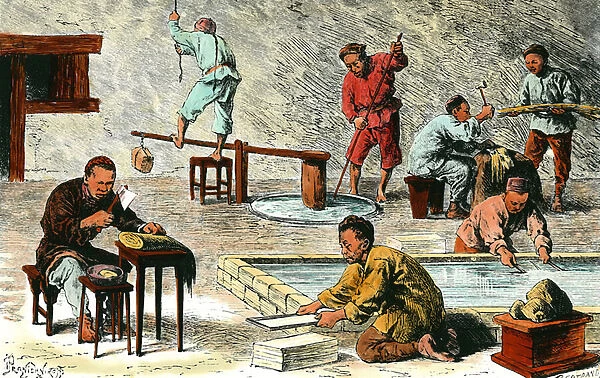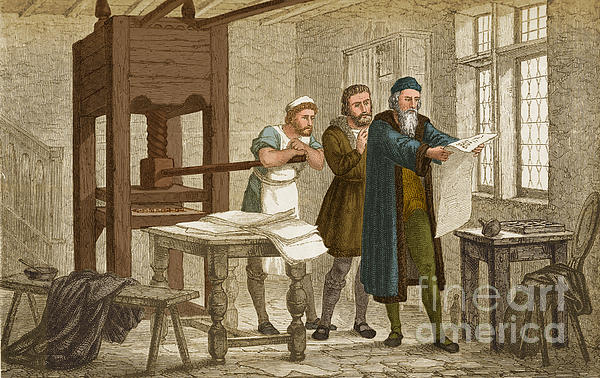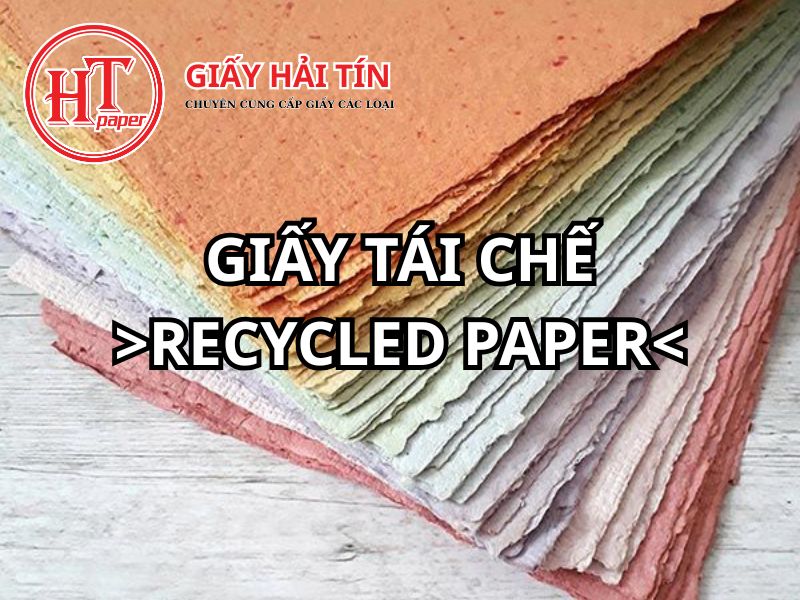The Origin of Paper: Formation and Development Process
The origin of paper is a long journey from its invention to becoming an essential material in daily life. This article delves into the production process and the stages of development over time, marking paper as one of humanity's most successful inventions.
Part 1: The Origin of Paper
Paper originated in China around 105 A.D. The first recorded inventor of paper was Cai Lun, a court official during the Eastern Han Dynasty. He refined the papermaking process by using materials such as mulberry bark, scraps of cloth, and old fishing nets to create a new material—handmade paper. This innovation not only made recording and conveying written information easier but also served effectively for storing information.
.jpg)
Part 2: What is Paper?
Paper is a thin, flexible, and lightweight material created by humans from plant-based sources for various purposes. From storing information to applications in education and the arts, paper has become an essential part of daily life.
Part 3: The Paper Production Process
Cai Lun’s paper production process was simple but effective, consisting of the following basic steps:
- Pulping: Materials like mulberry bark, cloth scraps, and old fishing nets were ground into fine pulp.
- Mixing with Water: The fine pulp was then mixed with water to create a slurry.
- Pouring onto a Screen: This mixture was poured onto a screen, allowing water to drain, leaving a thin layer of material.
- Drying: The thin layer was then dried to form a complete sheet of paper.

Before Paper: What Did People Use?
Before the invention of paper, humans used various materials to record and convey information, including:
- Papyrus: In ancient Egypt, papyrus plants were used to create an early form of paper.
- Parchment: The Greeks and Romans used animal hides to create parchment, a durable material that was widely used.
Part 4: The Development of Paper Through Different Eras
From China to Asia
Papermaking techniques spread across Asia, from Japan to Korea, in the 7th century. Paper became a cultural staple, particularly in Chinese calligraphy, showcasing the origin of paper in China.
Spreading to the Middle East and Europe
By the 8th century, papermaking techniques were learned by the Arabs after capturing Chinese prisoners at the Battle of Talas. From there, the practice spread throughout the Middle East and into Europe. Europe’s first paper mills were established in Spain and Italy in the 12th century. Here, the papermaking technique continued to be refined, laying the groundwork for a flourishing paper industry in the West.

Advances in Paper Production Technology
- Gutenberg’s Printing Press: In the 15th century, the invention of the Gutenberg printing press increased demand for paper, making knowledge and education more accessible.
- Industrial Revolution in the 19th century: This period shifted paper production from manual labor to mechanization, increasing output and lowering costs of labor and materials.
Part 5: Paper in the Modern World
Today, paper is made from various materials, including wood and recycled substances. Paper comes in numerous forms, from writing and newspaper paper to toilet paper and wrapping paper, fulfilling all kinds of needs in daily life. Yet, reflecting on the origin of paper, humanity is now confronting the environmental impacts of excessive resource extraction.
Environmental Concerns
Sustainable production and recycling initiatives are becoming more prominent to minimize environmental impact. We have created a history of paper’s origin, and now we share the responsibility to protect natural resources and promote environmental awareness.
Part 6: Conclusion
Paper has a long history, and its origin plays an important role in the advancement of humankind. From Cai Lun’s invention to modern production technology, paper is not just a medium for writing but also a symbol of knowledge and connection. Paper’s development reflects technological progress and exemplifies human creativity and adaptability in meeting the need for information and communication.
Source: Compiled, selected, and edited by P.Marketing - Hải Tín Paper
--------------------------------------------------------------------------------------------
Working Hours : Monday - Saturday : 08:00 am - 05:30 pm
Hotline:
CHINESE : 0938 808 998
ENGLISH : 0799.909.808
For more product : tại đây
Email: haitinco@gmail.com - kinhdoanh@haitinpaper.com
“Giấy mất bao lâu để phân hủy” không có một con số cố định — nó dao động tùy loại giấy, lớp phủ và môi trường (compost có oxy khác bãi chôn thiếu oxy). Bài viết này trình bày con số tham khảo, giải thích yếu tố ảnh hưởng, nêu riêng giấy thường dùng trong ngành may và cách xử lý/ tái sử dụng thực tế
Giấy khadi ấn độ là loại giấy thủ công truyền thống nổi bật của Ấn Độ, nổi tiếng với vẻ đẹp tự nhiên, độ bền cao và ý nghĩa văn hóa sâu sắc. Loại giấy này không chỉ dùng trong các hoạt động nghệ thuật mà còn gắn liền với lịch sử và tâm linh của đất nước này.





